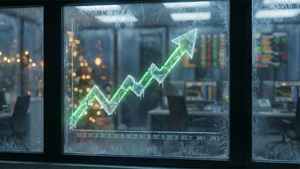
The American manufacturing sector is currently trapped in a protracted downturn, characterized by a steady erosion of jobs and a sustained contraction in activity. Recent economic indicators paint a concerning picture, with thousands of manufacturing positions vanishing and key industrial gauges signaling a shrinking base. This persistent struggle carries immediate and profound implications for the broader economy, fostering an environment of uncertainty and raising significant questions about the nation's future growth prospects and the stability of financial markets. The inability of this historically vital sector to regain its footing is prompting a critical reevaluation of economic resilience and the effectiveness of current policy responses.
A Stuttering Engine: What Happened and Why It Matters
The manufacturing sector's current predicament is clearly evidenced by a series of unsettling data points. In August 2025, U.S. manufacturers shed 12,000 jobs, contributing to a total loss of 42,000 manufacturing jobs since April 2025. Over the past year, nearly 80,000 manufacturing positions have disappeared, marking the longest continuous period of job losses since 2020. These cuts have been particularly pronounced in the durable goods sector, encompassing industries like automotive, household appliances, and electronics. Notably, the transportation equipment sector experienced over 14,000 job losses in August, a figure partly exacerbated by ongoing worker strikes. This recent decline fits within a larger, six-decade trend of decreasing manufacturing employment in the U.S., a phenomenon driven by increasing automation and intense global competition.
Further underscoring the sector's contraction, the Institute for Supply Management (ISM) Manufacturing Purchasing Managers' Index (PMI) registered 48.7% in August 2025. A PMI reading below 50% indicates contraction, and this marks the sixth consecutive month of shrinking activity for the sector. While a marginal improvement from July's 48%, it unequivocally signifies a manufacturing economy in retreat. A deeper dive into the sub-indices reveals mixed signals: the New Orders Index offered a glimmer of hope, rising to 51.4% and indicating growth after six months of contraction. However, the Production Index slipped back into contraction at 47.8%, and the Employment Index continued its downward trajectory, registering 43.8% for its seventh consecutive month of contraction. This sustained decline in the employment sub-index clearly indicates that companies are prioritizing staff reductions over new hiring. Simultaneously, raw material prices, as reflected by the Prices Index, have continued their upward trajectory for the eleventh straight month, reaching 63.7%, albeit at a slightly slower pace of increase.
This persistent contraction and job loss are attributable to a complex interplay of factors. Intensified automation continues to displace human labor, while broader economic uncertainties, including slowed consumer demand and elevated interest rates, are dampening investment and consumption. The lingering effects of tariffs further compound the issue by raising input costs for manufacturers. On a global scale, trade downturns persisted into August, with developed markets experiencing accelerated declines in export business across both manufacturing and services, further constraining demand for U.S. manufactured goods. This weakening industrial base has immediate implications for the overall U.S. job market, where only 22,000 jobs were added in August, significantly below forecasts, pushing the unemployment rate to its highest level since 2021. The unexpected downturn in manufacturing employment also raises concerns about the quality of job growth, particularly in working-class communities that rely on these traditionally stable, well-paying positions, and the potential for long-term earning losses and regional economic decline. For financial markets, the Flash Manufacturing PMI serves as a critical indicator for investor confidence; its decline often leads to reduced optimism, potential market downturns, and increased volatility, especially affecting manufacturing-heavy companies. Central banks are closely monitoring this data as it informs monetary policy, potentially prompting consideration of accommodative measures like interest rate cuts. While the overall picture is bleak, the slight uptick in new orders provides a mixed signal, with some analysts cautiously interpreting it as a possible "early acceleration" in the economy's business cycle.
A Diverging Path: Winners and Losers in a Contracting Landscape
The persistent contraction in the manufacturing sector is creating a clear divide between companies and industries, with some facing significant headwinds while others are positioned to exhibit resilience or even capitalize on the evolving economic landscape. Traditional durable goods manufacturers, heavily reliant on consumer discretionary spending and complex global supply chains, are bearing the brunt of the downturn. Companies in automotive, household appliances, furniture, and electronics, for instance, are vulnerable to reduced consumer demand, high interest rates discouraging large purchases, and tariffs that inflate raw material and component costs, squeezing profit margins. Specific public companies in the transportation equipment sector, such as Boeing (NYSE: BA), may face challenges from reduced orders and ongoing labor disputes, though the direct impact solely from the broader manufacturing downturn needs careful monitoring.
Similarly, raw material suppliers are likely to experience a direct hit. A decline in manufacturing output invariably leads to reduced demand for basic industrial commodities like steel, aluminum, and various chemicals. This can translate into lower sales volumes, price reductions, and even inventory gluts for companies like U.S. Steel (NYSE: X) and Alcoa (NYSE: AA), as industrial production continues its downward trend. The logistics and transportation sector is also feeling the pinch; a manufacturing contraction means decreased freight volumes for shipping, trucking, and warehousing firms. This reduction in business often leads to margin compression due to intensified competition and increased pressure on cost management for major carriers such as FedEx (NYSE: FDX) and UPS (NYSE: UPS), as well as railroad companies. Industrial equipment manufacturers not focused on advanced automation may also suffer as other manufacturers delay or cancel capital expenditures on less essential machinery during uncertain times.
Conversely, certain sectors and companies are demonstrating remarkable resilience or even positioning themselves for growth amid the broader challenges. The drive for efficiency and cost reduction is fueling a strategic imperative for manufacturers to invest in automation, AI, and IoT solutions. This makes companies at the forefront of industrial automation and robotics potential "winners." Firms like Rockwell Automation (NYSE: ROK), which offers programmable controllers and cloud analytics for predictive maintenance, and Cognex (NASDAQ: CGNX), specializing in machine vision systems crucial for quality control, are well-placed. Columbus McKinnon (NASDAQ: CMCO), providing equipment for automated factories and warehouses, stands to benefit from long-term trends like e-commerce growth. Even traditional industrial giants like Eaton (NYSE: ETN), with its diversification into industrial electrical systems and IIoT solutions focused on renewable energy, and Deere (NYSE: DE), through its precision farming technologies and autonomous tractors, are finding avenues for resilience.
Furthermore, sectors benefiting from significant government backing and strategic importance are also poised to thrive. The semiconductor industry, for example, is receiving substantial funding and investment through initiatives like the U.S. CHIPS Act, aimed at reshoring and bolstering domestic chip manufacturing. This creates a protected and incentivized environment for growth, benefiting companies like Intel (NASDAQ: INTC), Taiwan Semiconductor Manufacturing Company (NYSE: TSM), Micron Technology (NASDAQ: MU), and GlobalFoundries (NASDAQ: GFS), as well as equipment providers such as Applied Materials, Inc. (NASDAQ: AMAT) and LAM Research Corp. (NASDAQ: LRCX). Clean energy and electric vehicle (EV) components, driven by policy support from the Inflation Reduction Act and a global sustainability push, also continue to attract major investments. Companies like First Solar (NASDAQ: FSLR), SunPower (NASDAQ: SPWR), Plug Power (NASDAQ: PLUG), and even Ford Motor Company (NYSE: F) with its significant EV investments, are positioned favorably. Finally, consumer staples and healthcare sectors generally exhibit greater resilience during economic downturns due to the essential nature of their products, ensuring relatively stable demand for companies like Procter & Gamble (NYSE: PG).
Broader Tremors: Industry Impact and Far-Reaching Implications
The manufacturing sector's persistent contraction is more than just an isolated industrial setback; it is a critical signal of wider economic challenges, triggering a cascade of ripple effects across various industries and demanding significant policy attention. This synchronized global manufacturing slowdown, with activity contracting across major economies in the U.S., Europe, and Asia, marks a pervasive weakening in global demand, primarily driven by falling new order intakes. Such a downturn often precedes broader economic slowdowns, highlighting a reduction in both consumer and business demand.
One significant broader industry trend emerging from this contraction is the issue of inventory buildup. When production outpaces demand, companies across sectors find themselves with rising inventory levels. This imbalance can force businesses to cut production even further and resort to price reductions to clear excess stock, potentially deepening and prolonging the downturn. Compounding this, despite some easing, elevated input costs continue to squeeze manufacturers' profit margins, while aggressive interest rate hikes by central banks—aimed at combating inflation—simultaneously increase borrowing costs, thereby dampening investment and expansion plans. The long-term trend of automation and job displacement also plays a crucial role; modern factories, equipped with AI, robotics, and IoT, require fewer human workers for higher production, contributing to job losses even amidst private investments in new facilities and creating a significant "skills mismatch" in the workforce. This phenomenon is accelerating the long-term shift towards service-based economies, reducing manufacturing's overall share of employment and GDP.
The ripple effects of a manufacturing downturn are extensive, permeating interconnected global supply chains and competitive landscapes. Industries heavily reliant on complex global supply chains, such as automotive, electronics, and even pharmaceuticals, are particularly vulnerable to increased production costs, longer lead times, and potential shortages of parts and labor exacerbated by geopolitical tensions and trade policies. This reduction in manufacturing activity directly impacts suppliers of raw materials like steel and cement, logistics and transportation companies facing decreased freight volumes, and eventually retailers experiencing lower demand. In this environment, companies that demonstrate agility in adapting their supply chains and pricing strategies gain a competitive advantage, while those unable to absorb increased costs or pivot quickly risk losing market share. The employment multiplier effect further magnifies the impact: historically, every 100 jobs lost in durable manufacturing can lead to approximately 744 indirect job losses across the economy, disproportionately affecting working-class communities and contributing to broader economic decline.
This challenging environment frequently prompts significant regulatory and policy interventions. Governments are increasingly turning to industrial policy, implementing targeted public spending, grants, loans, and tax incentives to stimulate domestic production in critical sectors like semiconductors, electric batteries, and pharmaceuticals. The U.S. CHIPS and Science Act and the Inflation Reduction Act are prime examples of such efforts, aiming to reduce reliance on overseas suppliers. The role of tariffs and trade policy also comes under scrutiny. While tariffs are often touted as protectionist measures to strengthen domestic industries and promote reshoring, historical precedents suggest they can also increase input costs for industries reliant on global supply chains, lead to retaliatory tariffs, and dampen overall economic growth. Furthermore, manufacturers consistently cite regulatory burdens from agencies like the Environmental Protection Agency (EPA) as a significant impediment, with compliance costs disproportionately affecting smaller manufacturers. Discussions also revolve around "Buy America" provisions in new infrastructure and clean energy investments, and crucial labor and workforce development initiatives to address skills gaps and support non-college-educated workers.
Historically, the manufacturing sector has experienced cyclical growth and decline, offering valuable lessons. Post-World War II recessions consistently saw manufacturing employment decline, never fully recovering to pre-recession levels. The 1970s energy crisis and the subsequent deindustrialization of the "Rust Belt" underscored how increased production costs and global competition could decimate traditional manufacturing. Trade agreements like NAFTA contributed to significant U.S. manufacturing job losses in the early 21st century, exacerbated by foreign government subsidies. The period from 2000 to 2010 witnessed an unprecedented loss of nearly 6 million manufacturing jobs, exceeding even the rate of loss during the Great Depression. These historical precedents reveal that the current downturn is a mix of cyclical factors—such as weakened consumer demand during economic contractions—and long-term structural shifts driven by automation and a global transition towards service-based economies. Understanding this dual nature is crucial for formulating effective policies and preparing for future economic landscapes.
Navigating the Future: What Comes Next for Manufacturing
The path ahead for the manufacturing sector is characterized by a dynamic interplay of ongoing challenges and transformative opportunities, demanding both short-term adaptability and long-term strategic vision. In the immediate future, manufacturers will continue to grapple with economic volatility, including elevated raw material, energy, and wage costs, alongside persistent inflationary pressures. While some recent data hints at potentially stabilizing labor markets, the industry still faces a critical shortage of skilled workers and an aging workforce, making talent acquisition and retention a paramount concern. Global supply chains, though showing some improvement in delivery times since 2022 peaks, remain vulnerable to geopolitical tensions and logistical bottlenecks, sustaining higher transportation costs. Geopolitical and policy uncertainties, stemming from global elections and ongoing conflicts, further cloud the investment landscape, necessitating cautious decision-making.
However, amidst these immediate headwinds, there are nascent opportunities and critical strategic pivots underway. Despite an overall cooling, targeted investment in U.S. manufacturing continues, especially in digital and data foundations aimed at maximizing efficiency and building resilience. Niche markets, such as electric construction and agriculture equipment, nitrogen generators, and specific advanced manufacturing components, are projected for rapid growth. In the long term, the sector is poised for a significant transformation, with global manufacturing value-added projected to continue expanding. This growth will be underpinned by the full integration of technologies like AI, automation, IoT, robotics, and digital twins by 2030, ushering in an era of "smart factories" that optimize production and enhance operational efficiency through data and algorithms.
Strategic pivots are crucial for companies to thrive in this evolving environment. Digital transformation, particularly investments in AI and generative AI for high-return-on-investment use cases such as customer service and product development, is paramount. Building robust digital and data infrastructures will be foundational for successful AI implementation. Furthermore, manufacturers are increasingly prioritizing enhanced supply chain resilience through diversification, reshoring, and nearshoring strategies. This "reindustrialization" aims to bring production closer to home, improving control, reducing lead times, and mitigating global risks. A substantial investment in workforce development—upskilling initiatives, apprenticeships, and training programs—is also essential to bridge the talent gap and prepare the labor force for the demands of smart manufacturing.
Sustainability is rapidly transitioning from a corporate buzzword to a core strategic imperative, driving profitability, meeting regulatory demands, and integrating environmental responsibility into core business models. This includes adopting green technologies, leveraging sustainable feedstocks, and implementing circular economy models, with innovations like Digital Product Passports enhancing supply chain transparency. Lean manufacturing and continuous improvement principles will remain vital for cost control and productivity, fostering a culture of agility and innovation. Emerging markets, particularly in Asia and Africa, present significant growth avenues, driven by urban population growth and an expanding middle class. Countries like Vietnam and Mexico are attracting global firms looking to diversify supply chains beyond China, with strong investment opportunities in green energy, electric vehicles, and other high-tech manufacturing sectors. The development of regional supply chains, especially in Southeast and South Asia, integrated with China-led value chains, also presents significant potential.
Potential scenarios for the future range from a base-case continued expansion of the global manufacturing sector, albeit with ongoing navigation of challenges, to a technology-driven boom fueled by substantial investments in digitalization and AI, potentially accelerated by falling interest rates. Another scenario envisions resilient and localized production, where manufacturers successfully pivot to agile, diversified supply chains, strengthening domestic capabilities. A sustainability-driven outcome sees companies proactively embedding environmental responsibility into their strategies, gaining a competitive edge. Conversely, a more pessimistic scenario involves persistent weak demand, ongoing geopolitical instability, and a failure to adapt, leading to stagnation for unprepared firms. Ultimately, the integration of AI will lead to an evolving hybrid workforce where humans and AI collaborate, necessitating continuous upskilling and a focus on human ingenuity alongside automation.
The Reshaping of an Industry: A Concluding Outlook
The current struggles in the U.S. manufacturing sector represent a critical juncture, underscoring both profound challenges and a powerful impetus for transformation. The sector is grappling with persistent labor shortages, volatile supply chains, escalating costs, and the complex demands of technological advancement and cybersecurity. Geopolitical shifts and evolving regulatory landscapes, coupled with fluctuating demand and interest rates, have created an environment of heightened uncertainty that demands strategic agility. However, these very pressures are also catalyzing significant innovation and strategic pivots, steering the industry toward a more resilient, technologically advanced, and sustainable future.
Moving forward, the manufacturing market is poised for significant growth, particularly in specialized segments like smart manufacturing, AI in production, and digital twin technologies. This growth will be fundamentally driven by accelerated digital transformation, a comprehensive reshaping of supply chains towards greater resilience and localization, and the deep integration of sustainability as a core operational strategy. The manufacturing workforce itself will undergo a profound evolution, with continuous investment in training and automation becoming essential to bridge the skills gap and adapt to advanced technologies. The lasting impact of this period will likely be seen in more robust, localized, and technologically sophisticated supply chains, highly automated and data-driven factories, a skilled and adaptive workforce, deeply embedded sustainability practices, and a persistent focus on cybersecurity.
For investors, the coming months will require a discerning eye and a focus on key indicators. It will be crucial to monitor macroeconomic trends, including inflation, interest rate policies, and overall economic growth, as these will directly influence demand for manufactured goods. Vigilance regarding geopolitical developments and trade policies, such as new tariffs, will also be essential due to their significant impact on supply chains and costs. Investors should prioritize companies actively investing in and successfully implementing AI, automation, digital transformation, and robust cybersecurity solutions. Identifying manufacturers with clear digital roadmaps, those diversifying their supply chains, and those demonstrating strong commitments to ESG principles will be key.
Furthermore, investors should watch for companies addressing the talent gap through effective workforce development initiatives and those operating in sub-sectors benefiting from mega-trends like renewable energy infrastructure and defense spending. Diversification across manufacturing sub-sectors and geographies can help mitigate risks. In essence, the smart money will gravitate towards companies that are not merely reacting to the current downturn but are proactively transforming their operations to capitalize on new technologies, build truly resilient supply chains, and embed sustainability into their very core. Public policy support for private investment in clean tech, energy grids, and domestic manufacturing capacity in various countries, including the U.S., could provide a strong tailwind for select industrial players, with many large-scale projects anticipated to gain momentum in 2026.




